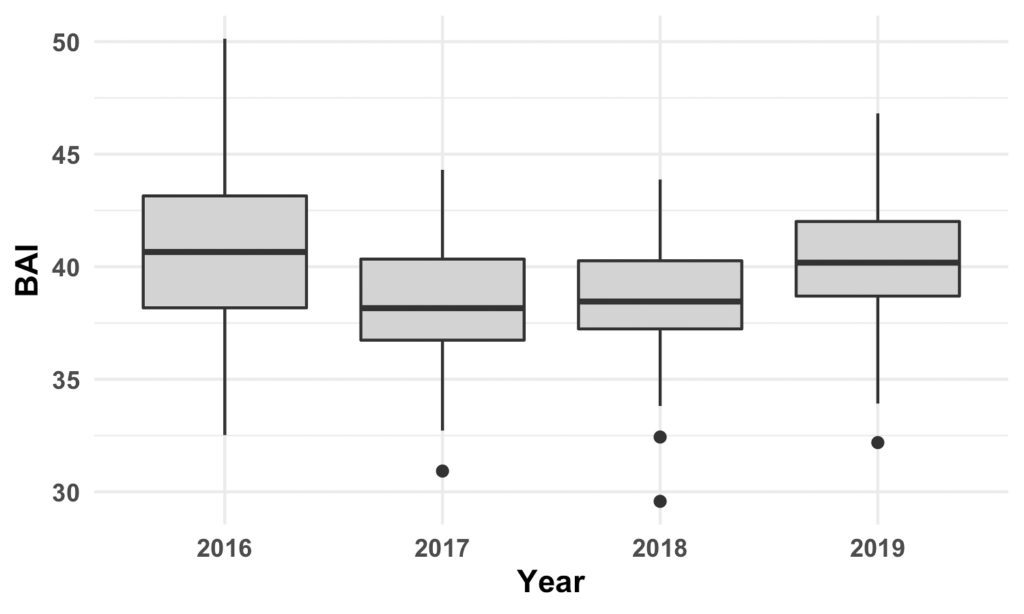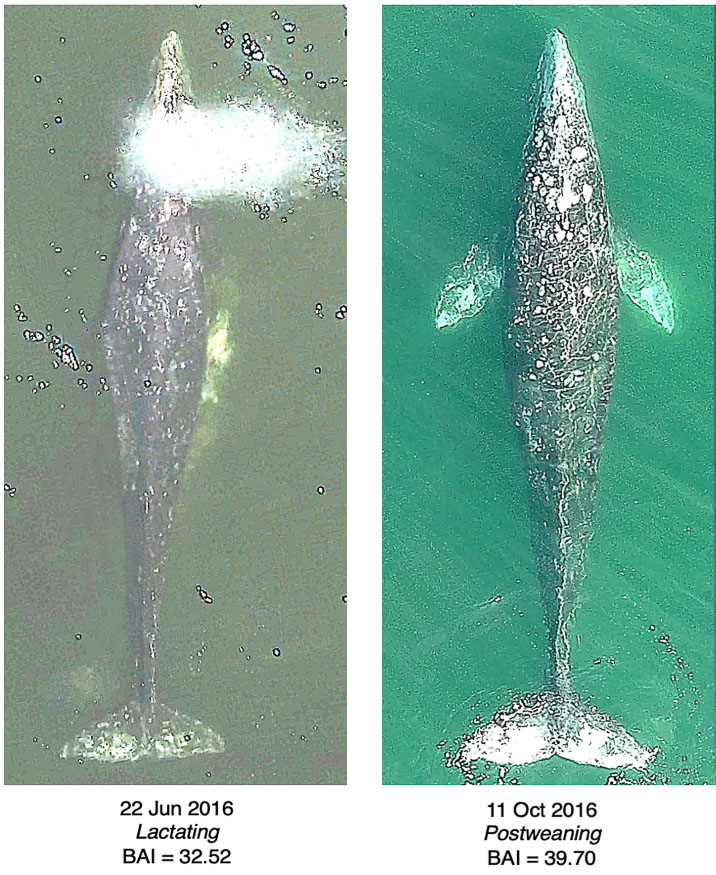How do we study whale body condition using drones?
Since we cannot hold them in captivity or ask them to stay still while we get our measuring tape out. So, we use drones (or Unoccupied Aerial Systems, UAS) to fly over whales without disturbing them and collect data on body condition (and behavior).
We hand launch the drone from our research vessel and then a trained and certified pilot flies the drone over the whale at an altitude of about 30m/98ft. We record video of the whale at the surface and underwater, if water clarity allows us to track it, for up to 15 minutes (battery life constraints). After the data has been collected, we process the video data. This analysis involves extracting screenshots of the whale when it is flat and straight at the surface. From these images we conduct photogrammetry, which is the process of making measurements from photographs.
(Whale images captured under NOAA/NMFS research permit # 16111.)
This drone video was captured just off the Newport, Oregon coast, and you can see the jetty and dredge vessel operating in the distance. The pilot navigates the drone to be directly over top of the whale. Then a still image of the whale flat and straight at the surface is extracted from the video, which we bring into our custom made (free) software to conduct photogrammetry. We measure the whale length (WL) and then mark the outer edges of the whale’s body between the 20% and 60% length of the whale (this is where gray whales gain and loss mass).
(Drone and vessel operation near whales conducted under NOAA/NMFS research permit # 21678.)
In this cool 360 video, you can see how our research team operates in the field to collect data across a few different days (be sure to use your mouse to move around the video field of view). You can see how we conduct this drone work in the field, including assembling the drone, launching the drone, putting the calibration board in the water and flying over it (so we can convert pixels to metric units), and how the drone operator pilots the drone (from the video start to ~3:50).

From our photogrammetry measurements we have developed a whale body condition metric called the Body Area Index (BAI), which is like the Body Mass Index (BMI) used to compare the body condition of humans. Small BAI values mean the whale is skinnier and larger BAI values indicate the whale is fatter (see Image of Clouds). Using the BAI we can compare how the body condition of individual whales changes over time due to feeding conditions or health (i.e., injuries or reproductive state), and how the overall health of the population may change overtime (see population BAI boxplot).

